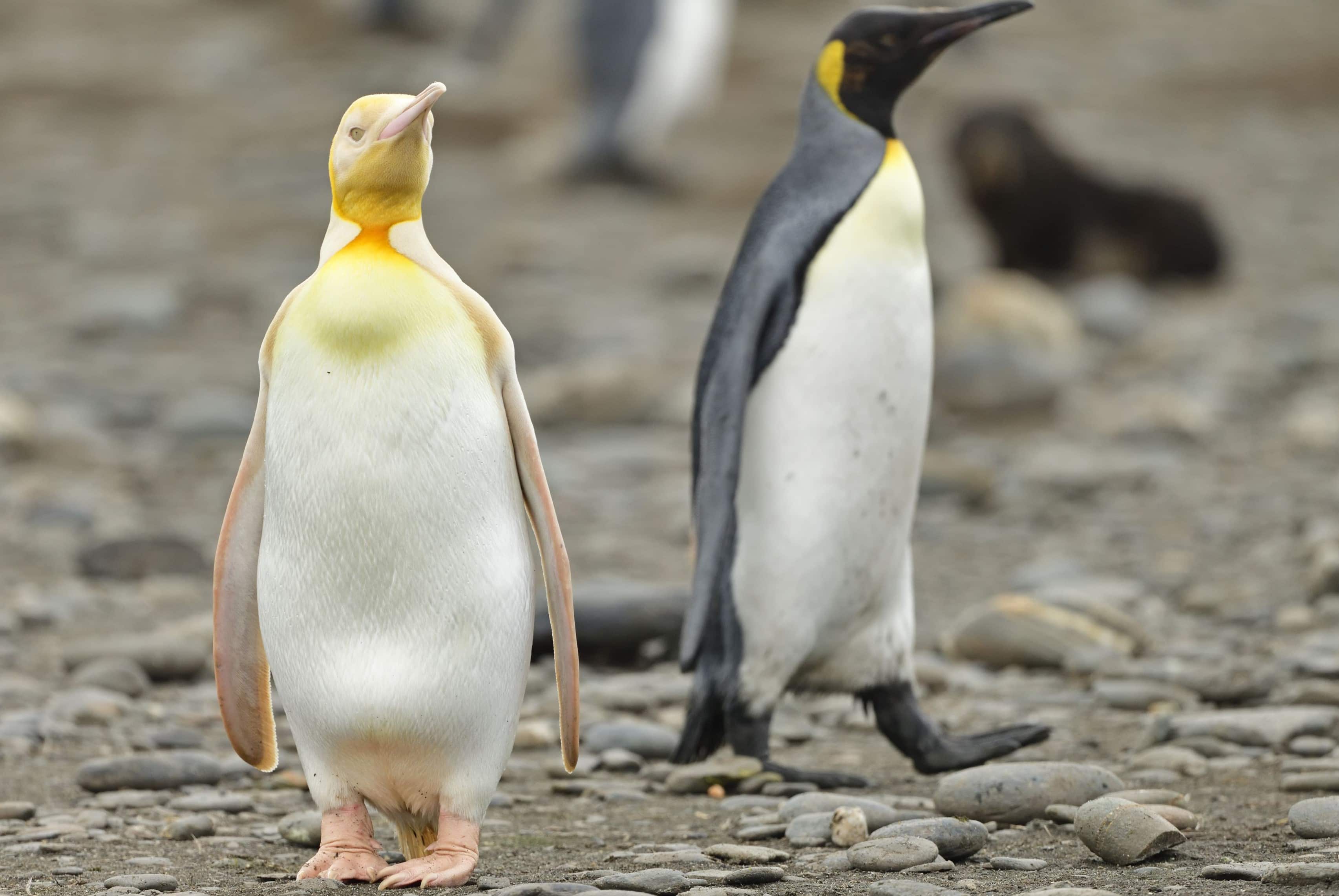
Ever wondered why some animals sport unusual colors? Rare color mutations in animals are genetic quirks that result in unique and captivating appearances. These mutations can lead to a variety of colors and patterns, from the pure white of albinism to the deep black of melanism. They occur across a wide range of species, including mammals, birds, and amphibians. These genetic variations not only make animals stand out but also offer fascinating insights into genetics and evolution. Whether it’s a blue lobster or a piebald horse, these rare colorations capture our imagination and deepen our appreciation for nature's diversity.
What Are Color Mutations?
Color mutations in animals are fascinating genetic variations that lead to unique and unusual appearances. These mutations can affect a wide range of species, from mammals to birds, and even amphibians. Let's explore some intriguing facts about these rare color mutations.
-
Definition of Color Mutations
Color mutations refer to genetic changes that affect the pigmentation of an animal's skin, fur, feathers, or other tissues. These mutations can result in a variety of colors, including albinism, leucism, melanism, and others. -
Albinism
Albinism is a well-known color mutation characterized by the complete lack of melanin production. This results in animals appearing white with pinkish skin and eyes due to the visibility of blood vessels. -
Leucism
Leucism is another condition that reduces the amount of melanin and other pigments in an animal's fur, feathers, or skin. Unlike albinism, leucistic animals can still have black or other colors present in their coats, along with normal-colored eyes. -
Melanism
Melanism is caused by an excess of melanin, resulting in dark-colored animals. This condition is less common than albinism and leucism but can be observed in various species, including birds and mammals. -
Piebaldism
Piebaldism is a color mutation characterized by the absence of pigmentation in certain parts of an animal's body, resulting in a spotted pattern. This condition is most commonly found in horses, dogs, cats, birds, pigs, cattle, and snakes. -
Chimera
Chimera refers to an organism composed of genetically distinct cells. This can result in gynandromorphism (having both male and female characteristics) or other unique appearances, such as having two distinct colors on one body.
Causes and Examples of Color Mutations
Understanding the causes behind these mutations can provide insight into their effects and prevalence in different species.
-
Causes of Color Mutations
Color mutations are primarily caused by genetic variations. These mutations can occur randomly or be inherited from parents. The randomness of these mutations means that they do not "know" the environmental conditions they will face and are simply a result of genetic drift. -
Albino Animals
Albino animals lack melanin, resulting in white skin and pink eyes. Examples include albino deer, rabbits, and even humans. -
Leucistic Animals
Leucistic animals have reduced pigmentation but can still have black or other colors present. Examples include white zebras, lions, and tigers. -
Melanistic Animals
Melanistic animals have an excess of melanin, resulting in dark colors. Examples include black panthers and dark-colored birds. -
Piebald Animals
Piebald animals lack pigmentation in certain parts of their bodies, resulting in spotted patterns. Examples include piebald horses and dogs. -
Chimeric Animals
Chimeric animals have genetically distinct cells, resulting in unique appearances. Examples include gynandromorphic birds and snakes.
Evolutionary Significance and Adaptations
Color mutations can have significant evolutionary implications, affecting an animal's survival and reproductive success.
-
Evolutionary Significance
Color mutations can have significant evolutionary implications. For example, albinism can provide camouflage in snowy environments, while melanism can provide protection in dark environments. These adaptations can increase an animal's survival chances and reproductive success. -
Seasonal Color Changes
While color mutations are genetic, seasonal color changes are not. These changes are due to the expression of genes that regulate pigment production. For example, some birds change their plumage from brown to white in winter to blend in with snow. -
Blue Lobsters
Blue lobsters are a rare color mutation caused by an overproduction of a protein called crustacyanin. This protein interacts with a red pigment molecule to create the blue tint. -
Glass Frogs
Glass frogs are another example of a unique color mutation. Some members of the Centrolenidae amphibian family have transparent undersides, making their major organs visible to the outside world. -
Red and Yellow Variations
Color variations can also be influenced by diet. For example, house finches get their red coloration from carotenoids in their food. A poor diet in these pigments can result in yellow feathers instead of red. -
Fright Molt
Some birds, like Black-capped Chickadees, can appear white due to the loss of their tail feathers. This is not a genetic mutation but rather a result of the bird losing its tail to a predator. -
Pollution Effects
Pollution can also affect an animal's coloration. For example, exposure to certain chemicals can alter the pigmentation of feathers or fur, leading to unusual appearances.
Natural Selection and Genetic Drift
Natural selection and genetic drift play crucial roles in the prevalence and fixation of color mutations in animal populations.
-
Natural Selection
Natural selection plays a crucial role in the prevalence of color mutations. For instance, in snowy environments, white-coated animals are less visible to predators and more likely to survive, thus increasing the chances of their genes being passed on. -
Randomness of Mutations
Mutations are random events that do not "know" the environmental conditions they will face. This randomness means that any mutation, including those leading to unusual colors, can occur at any time. -
Prevalence of Mutations
The prevalence of color mutations varies widely among species. Some mutations are common, while others are extremely rare. For example, albinism is relatively common in some species but extremely rare in others. -
Genetic Expression
The expression of genes related to pigmentation can vary significantly among individuals. This variation can result in different shades of the same color or even different colors altogether. -
Environmental Influence
While genetic mutations are the primary cause of color variations, environmental factors can influence how these mutations manifest. For example, diet can affect the intensity or type of pigmentation in some species.
Unique Cases and Research
Some unique cases of color mutations and ongoing research provide deeper insights into these fascinating phenomena.
-
Chimera Formation
Chimeras are formed when two fertilized eggs merge during early development. This rare occurrence results in an organism composed of genetically distinct cells, leading to unique appearances. -
Gynandromorphism
Gynandromorphism is a type of chimera where an individual has both male and female characteristics. This can result in distinct color patterns on different parts of the body, as seen in some birds and reptiles. -
Selective Pressure
Selective pressure can drive the prevalence of certain color mutations. For instance, in environments where camouflage is crucial for survival, white-coated animals may have an advantage over their normally colored counterparts. -
Genetic Drift
Genetic drift is the random change in allele frequencies in a population over time. This process can lead to the fixation or loss of certain traits, including color mutations, even if they are not advantageous. -
Artificial Selection
Artificial selection, practiced by humans, can also influence the prevalence of color mutations. For example, selective breeding for specific coat colors in domestic animals has led to a wide range of colors not found in their wild counterparts. -
Medical Implications
In humans, certain color mutations can have medical implications. For example, albinism is associated with increased sensitivity to sunlight and vision problems. Understanding these conditions can help in developing treatments and therapies. -
Conservation Efforts
Understanding color mutations can also aid in conservation efforts. For instance, recognizing rare color morphs can help in identifying and protecting endangered species. -
Educational Value
Color mutations provide valuable educational opportunities. Studying these phenomena can help students understand genetics, evolution, and the diversity of life on Earth. -
Scientific Research
Scientific research into color mutations can lead to new discoveries. For example, studying the genetic basis of albinism has provided insights into melanin production and its role in human health. -
Public Interest
Color mutations often capture public interest due to their unusual nature. Documenting these phenomena through media and educational programs can raise awareness about genetic diversity and evolutionary processes. -
Ethical Considerations
There are ethical considerations surrounding the study and display of color mutations. Ensuring that animals are treated with respect and care is crucial, especially when dealing with rare or unusual specimens. -
Cultural Significance
Color mutations have cultural significance in many societies. For example, albino animals are often revered in some cultures for their rarity and perceived spiritual significance. -
Historical Records
Historical records show that color mutations have been observed for centuries. For example, descriptions of albino animals can be found in ancient texts and folklore. -
Modern Technology
Modern technology has enhanced our ability to study color mutations. Techniques like genetic sequencing and imaging have provided detailed insights into the genetic basis of these phenomena. -
Collaborative Research
Collaborative research between scientists from different fields (genetics, zoology, ecology) is essential for understanding color mutations. This interdisciplinary approach can lead to a more comprehensive understanding of these complex phenomena. -
Public Engagement
Engaging the public in discussions about color mutations can foster a deeper appreciation for genetic diversity and evolutionary processes. This can be achieved through educational programs, exhibitions, and media coverage.
The Fascinating World of Color Mutations
Color mutations in animals offer a window into the wonders of genetics and evolution. From albinism and leucism to melanism and piebaldism, these genetic quirks create stunning and sometimes bizarre appearances. They can affect survival, camouflage, and even social interactions. Chimeras and gynandromorphs add another layer of intrigue, blending distinct genetic traits into one organism. While some mutations are rare, others occur more frequently, influenced by factors like diet, environment, and genetic drift. Understanding these mutations not only enriches our knowledge of biodiversity but also aids in conservation efforts. Studying them can reveal much about the natural world and our place within it. So next time you spot an unusually colored animal, remember, you're witnessing a marvel of nature's genetic artistry.
Was this page helpful?
Our commitment to delivering trustworthy and engaging content is at the heart of what we do. Each fact on our site is contributed by real users like you, bringing a wealth of diverse insights and information. To ensure the highest standards of accuracy and reliability, our dedicated editors meticulously review each submission. This process guarantees that the facts we share are not only fascinating but also credible. Trust in our commitment to quality and authenticity as you explore and learn with us.


